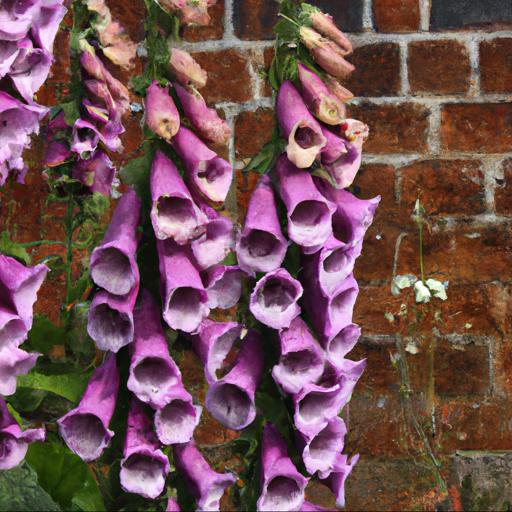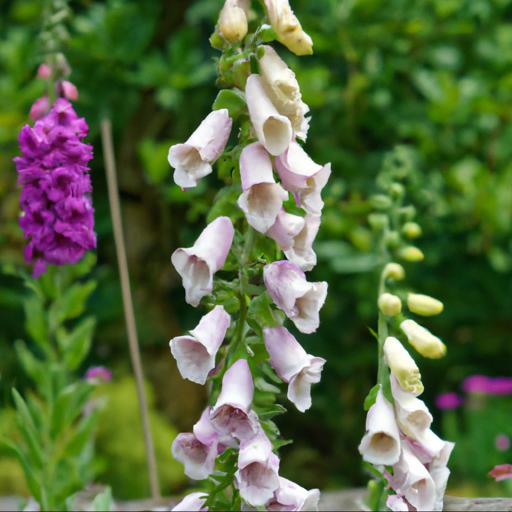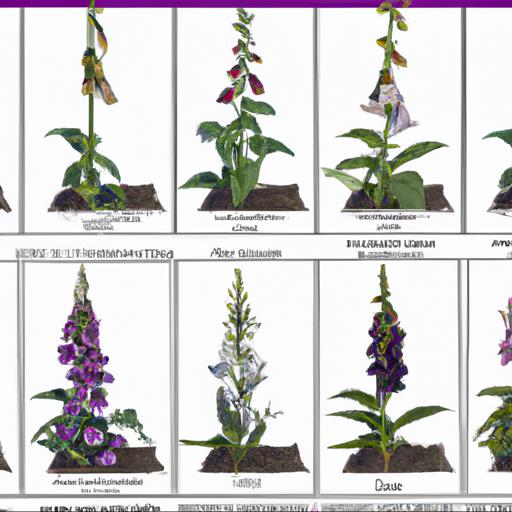Gardening enthusiasts will love the challenge of growing foxgloves in their garden. Not only are they beautiful and majestic, but they also attract bees and butterflies, making them a great addition to any outdoor space. But if you’re looking for something to pair with your foxgloves, here are six plants to consider.
From colorful daisies and lilies to fragrant herbs and grasses, you’ll find plenty of options to create a stunning display. With a bit of research and some patience, you’ll have a garden full of foxgloves and other plants in no time.
Benefits of growing foxgloves

. Gardening with foxgloves is a great way to add drama and floral interest to your garden.
Not only do they grow easily and quickly, they also share their blooms happily with other plants while providing full shelter and color. When growing foxgloves, it’s important to consider their needs – they prefer shady, moist and well-draining soil and flower best when they are in full sunlight. Growing foxgloves is a great way to add texture and interest to your garden.
They come in a variety of colors and sizes, and can be grown in beds, borders, containers, or even in hanging baskets. Here are a few plants that will create a stunning combination when grown alongside foxgloves in your garden:
Lilies: Lilies can provide a great contrast to the purple pink shades of foxgloves. Planting a Lily next to a foxglove gives the garden a sense of balance and color.
Lavender: Lavender is a classic English garden favorite and its distinctive aromas, which blend perfectly with foxgloves, make it a great companion for any garden.
Roses: The bold colors of roses and foxgloves create an eye-catching display of both elegance and modernity in your garden. Sweet pea: For an easy-care, fragrant annual, sweet pea will definitely please gardeners of all ages.
They come in bright colors and attractive, lacy foliage and thrive in the cooler shade of the foxgloves. Verbena: This annual has a long bloom period and is ideal for adding height and variety to your garden. Brightly colored verbena planted next to foxgloves can provide a dramatic display of colors. Hydrangea: Hydrangea are classic shade-loving plants that provide beautiful blooms throughout the summer. Hydrangeas are best planted next to tall foxgloves for maximum impact. Gardening with foxgloves can create an unforgettable display of flowers and foliage for everyone to enjoy. When choosing companion plants for foxgloves, it’s important to consider the size and color of each plant and determine which will create the best impact in your garden. With a few careful choices, you can create a stunning display that will no doubt draw the eye in any garden.
Six plants to grow with foxgloves

When thinking of a cottage garden, foxgloves are often the first flower that comes to mind. Not only is it a beautiful flower, but it also benefits your garden by attracting bees and other pollinators.
That being said, if you’re looking to have a full garden and don’t want it to be too monotonous, here are six plants that you can grow with foxgloves. The first plant is Lamb’s Ear. The soft, silvery leaves of this perennial provide a stunning contrast to foxglove’s delicate pastel flowers.
Not only that, but they fill up your garden quickly and require very little maintenance. Furthermore, their light shade makes them the ideal companion for foxgloves, as they don’t require direct sunlight to thrive. The second plant is Dianthus, which is a flowering pink perennial.
It has a soft, yet powerful scent and creates a nice contrast when planted next to foxgloves. Also, due to its low growth habit, it won’t overshadow your foxgloves and will complement them nicely.
The white and pink variety is especially beautiful in full June bloom. Lily of the Valley is a great companion plant as well.
It has small, fragrant white bell-shaped flowers and grows in most soils, including clay and acidic soils. Moreover, it will self-seed, so you needn’t worry about having to replant it every spring. Campanula is another fantastic choice to grow with foxgloves.
The brightly colored bell-shaped flowers look equally beautiful solo or in combination with foxgloves. This perennial also requires minimal maintenance, as it does not grow too tall or require any extra fertilizer. Coreopsis is also known for its beauty and can add a touch of color to your garden. Not only is it drought tolerant and low maintenance, but it also blooms from May until September and never fails to add cheeriness to a garden. Its bright yellow, daisy-like flowers go wonderfully with the white and pink colors of foxgloves. Last, but not least, consider planting snowdrops, a beautiful white and green flowering bulb. From February to April, they offer a beautiful contrast to the pastel colors of foxgloves, while in the summer they look just as gorgeous planted in among striking shrubs and lawn grass. Foxgloves make a beautiful addition to any garden as they fill it with pastel colors and attract bees and other pollinators. However, to have a fully blooming cottage garden, consider adding these six plants to it as well. From Lamb’s Ear and Dianthus, to Lily of the Valley and Coreopsis, these plants can help you create a spectacular combination with foxgloves.
Tips for growing foxgloves

. Gardening is a rewarding hobby and a great way to make your home vibrant and full of life.
One terrific way to do this is to include some foxgloves in your garden. These beautiful, purple-and-white flowers evoke the beauty of the British countryside in the summer months and can be the perfect accent to many different kinds of garden. Here, we will give you some advice on how to make Foxgloves the centerpiece of your outdoor oasis.
For optimal growth, Foxgloves need plenty of sun and well-drained soil. Make sure they receive at least six hours of light each day, and also mulch or compost the area around them to help the soil retain moisture.
Additionally, foxgloves should be planted in clumps or in rows for best effect – this will allow the most efficient absorption of sunlight and the most blooms for your garden. When it comes to other plants to put in a garden with foxgloves, there are a plethora of choices. To give your garden the classic British look, try planting lavender, cornflowers, meadow foxtail, poppies, and wild strawberry.
Not only are these beautiful when they bloom, they will also balance out the light purple color of the foxgloves. Alternatively, one could try including some colorful annuals alongside the foxgloves, such as petunias, snapdragons, or even marigolds.
These will complement the purple color of the foxgloves without dominating the garden. Ultimately, the best way to create a garden with foxgloves is to be creative and experiment with different plant combinations. Once correctly planted and maintained, foxgloves can provide long-lasting color to your outdoor landscape.
So go ahead and start planning your garden today!
Our video recommendation
Conclusion
Foxgloves are beautiful, easy-to-grow plants that add a touch of elegance to any garden. They also make great companions for other plants.
Six great plants to grow with foxgloves include roses, lavender, hellebores, astilbes, bergenias, and dianthus. These plants will add color, texture, and fragrance to your garden, creating a stunning display of beauty that will last all season long.
FAQ
What are the benefits of growing foxgloves?
The benefits of growing foxgloves include providing nectar for pollinators, adding color and texture to the garden, and providing a source of medicinal compounds.
What other plants can be grown with foxgloves?
Other plants that can be grown with foxgloves include hostas, ferns, daylilies, and astilbes.
How much sunlight do foxgloves need?
Foxgloves need full sun to partial shade for optimal growth.
How often should foxgloves be watered?
Foxgloves should be watered when the soil is dry to the touch, usually about once a week.
What type of soil is best for growing foxgloves?
Well-drained, nutrient-rich soil is best for growing foxgloves.
How can foxgloves be propagated?
Foxgloves can be propagated by seed or division.

